The transition of power from a female monarch to a male monarch brought about serious changes in the art and fashion of England during the 1900s. The period of King Edward VIIs rule, i.e. 1900 to 1910 is often referred to as the Edwardian Era. Some historians conveniently draw the demarcation to 1912.
The Victorian era was known for its serious and subtle fashion and art. The queen showed more interest in dark shades and complex structures. However, the new monarch felt at ease trying fresher ideas and was open to the not so formal fashion and art.
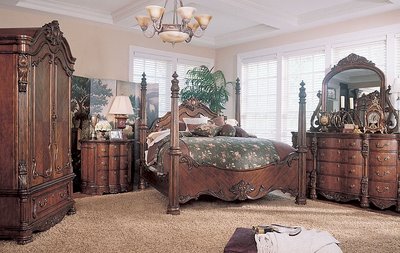
A typical Edwardian interior was something new and cheerful. Fresh and light colours composed most of the interiors in the UK in this period. It saw the beginning of a deviation from the formal to informal. Furniture started being made of bamboo and wicker. They were made in various styles which included baroque, rococo, and empire. Modern creativity made these pieces of furniture simple yet close to the elite. The wing chair can be cited as one of the best examples to demonstrate Edwardian furniture.
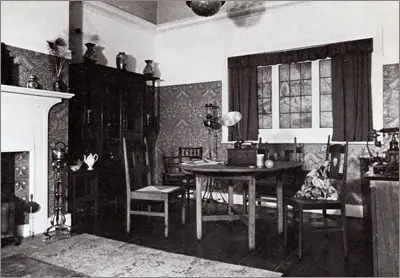
The flooring of an Edwardian room was composed of highly polished wood blocks accompanied by oriental rugs. There was also a notable increase in the use of flowers and floral patterns in decorating houses. Ranging from wallpapers to paintings floral patterns could be seen all over England. Wallpapers started featuring floral patterns of rose, lilac, and other bright flowers.
Lincrusta, i.e. embossed wallpapers were also widely used to decorate walls in this period. Its texture was like that of rubber and it usually came in spectacular Art Nouveau designs. People also showed a renewed interest in pastel colors in this era. Colour schemes were mostly preferred in floral pastels. Living rooms were usually darker in colour than the other rooms.
Fireplaces became smaller than their Victorian counterparts. Iron and copper hoods were added to enhance the visual appeal of these fireplaces. With the introduction f electricity amongst the rich houses, lighting in the form of wall lights, and table lamps became quite popular. Central lighting was usually done in smoked glasses fitted on the ceilings.
Windows in this era were usually composed of hanging laces accompanied by floral curtains to supplement the wall colours. Simple roller blinds were also is used in the Edwardian interiors. Other decorations of the room included conical shell gramophones, silverware like cake stands, photograph frames, and candlesticks.
Rooms designs
The Edwardian era was the pinnacle of the revolutionary changes brought in the art and fashion of the lifestyle in the United Kingdom. The advent of a male monarch, i.e. King Edward VII to the British Crown brought about a fresh ambiance with a way for fresher ideologies and discoveries. Formal was no more the code and informal became the latest trend in the country.
Fresh colours were in and dark shades of the Victorian era were no more a royalty. Complex designs also gave way to simpler yet trendy models. Edwardian rooms were painted in bright shades of pastels and were also decorated in similar wallpapers. Bright floral patterns of flowers like rose and lavender were featured on the wallpapers in rooms. Embossed wallpapers known as Lincrusta were also a unique addition to the Edwardian rooms. These wallpapers had a rough texture and were a visual treat to the eye.
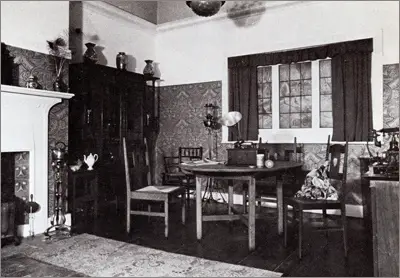
Furniture
The furniture of the rooms was made of bamboo, wicker, and mahogany. Living rooms were coloured in comparatively darker shades than the other rooms. The Art Nouveau design was another unique characteristic in the decoration of an Edwardian room. Bolder figures of humans and organic natural elements featured on the wallpapers, coloured glass, and other decorative fell under this design. Even the curtains of the rooms were made into bright floral designs.
More emphasis was laid on the durability of the furniture and the designs of the same were kept simple yet elegant. Furniture like the wing chair was specific to the Edwardian age. Floors were made of both tiles and wooden boards. Tiles came in light colours and simple designs. Highly polished wood blocks accompanied by oriental rugs were also a specialty of Edwardian times.
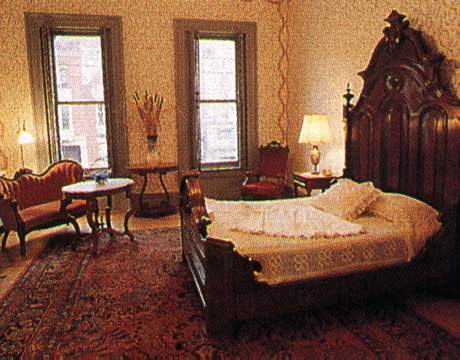
The fireplaces of an Edwardian room were quite smaller as compared to their Victorian counterparts and usually accompanied an iron or brass hood. The introduction of electricity in some of the rich houses of the country made the lighting arrangements quite different from the previous times.
Table lamps and wall lights enhanced the visual appearance of the rooms and central lighting was usually done in smoked glass. The use of plate glass mirrors also became popular during this time. Huge plate glass mirrors were usually decorated on mantelpieces above fireplaces.
All mixed together the Edwardian era believed in simplicity with style. This paved the way for the simple style we all appreciate today.
Edwardian paint colours
There were many factors that influenced the choice of colors in the Edwardian age. With important movements like the Art Noveau and the breakthrough in fashion and interior designing with new concepts coming from the Orient, newer colors achieved prime importance.
Even designers like Charles Rennie Mackintosh advocated the use of a newer alternate color scheme that had not existed before.
With the development of printing and paint technologies, new wallpaper and color schemes began to develop in Europe. There was also an intense interest in alternate sciences such as the art of living and healthy living. As science itself developed, people began to acquire knowledge about fresh air and sunlight. This also led to a change in the preference of color schemes.
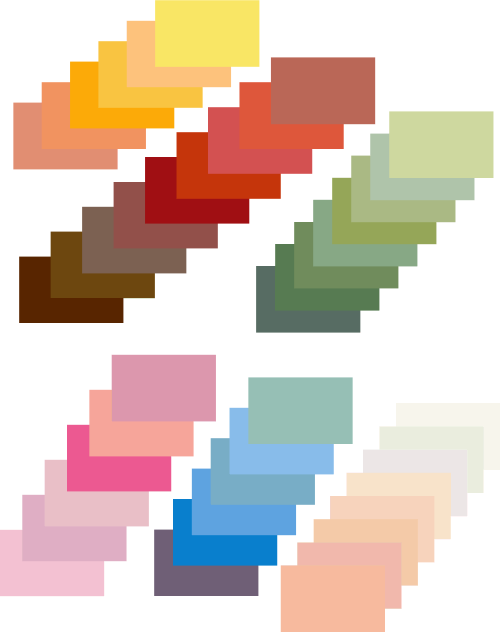
In place of the dark color schemes of the Victorian era, people thus began to opt for lighter shades. This was also reflected in the wallpapers and color schemes.
Electricity was developed. Most houses could afford electric light. This meant the discarding of gas lamps which was used previously. Gas lamps caused discoloration of the walls; hence people had to go for darker paint colors. But with the usage of electric lamps, wall colors were set free and people became more open to experimentation with the color palette. Edwardian paint colors were thus experimental.
The Art Noveau brought different colors to the sensibilities of people for the first time. They experimented with lighter softer palettes like olive green, mustard, sage green, pale blue, pale deep pink, violet, and lilac. With the use of these colors as paint schemes, the pattern and design also had to change. Thus we see the rise of new motifs in tiles and wallpapers like the whiplash motif, flowing lines, and stylized flower and foliage patterns.
Mackintosh was a Scottish designer and architect who was one of the pioneers of minimalist art in interior decoration. The rooms he designed had white carpets, ceilings, and walls. Decorative details like Glasgow Rose patterns were embedded in soft pink or light grey on the furniture and walls.
So if you are going for Edwardian paint colors, do not forget to use cream, white and light shades.
Edwardian era lamps
The discovery of electricity was one of the biggest turning points in the development of mankind. Lighting plays a very important role in bringing out the visual beauty of elements. With the introduction of electricity in some of the rich houses of England, Edwardian Lamps had to be restructured in a completely new fashion.
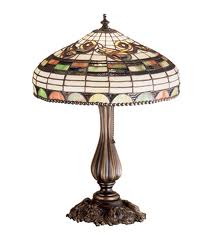
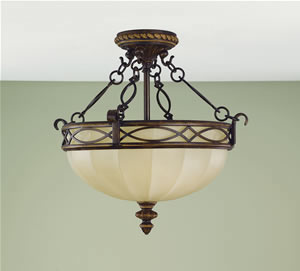
Fabric lampshades were used in a variety of forms like wall lights and table lights. Dark colours became out of fashion ever since the onset of the Edwardian era and hence the lampshades came in bright and light colours. Frills and tassels often accompanied the fabric. Another unique lamp, pod lights were composed of glass pods hung by brass fittings.
Hanging lights were used for central lighting many of which included heavy brass and silverware. Tiffany lamps which were composed of female bronze figures were also a favourite. Brass was freely used in the manufacturing of these lamp shades though silver was preferred for elites.
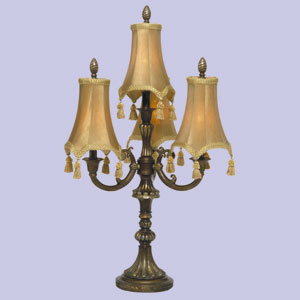
Edwardian China & crockery
Though the Edwardian elite society preferred more silverware for crockery, china was in no way left behind. The Edwardian era saw quality china products with their thickness more than the normal chinaware. Basic light colours with simple yet catchy designs were some of the main features of Edwardian China.
More of the crockery available in the antique market today sings the virtue of silver however china started catching up at a steady pace in the latter half of the Edwardian era. The Art Nouveau movement is another event worth a mention here. As part of this movement, all art forms were centered on nature and real-life elements.
Flowers, plants, and human lives formed the major inspiration behind every art form created in the Edwardian era. Edwardian lamps and china were no exceptions. Painting and carvings of this form were a hit on lamps and china was almost always based on this art form. One can still find several examples of these in museums and antique stores across England.
Edwardian Fireplaces
Cast iron was used in making fireplaces during the Edwardian era. The Edwardian fireplaces had the frame made out of cast iron and there are tiles fixed on all the sides of the fireplace. The fireplaces also incorporated a wooden mantelpiece. The mantelpieces were often coated in colors.
About The Past
Something called canopy on legs existed before Edwardian times. This style that was included in fireplaces gained popularity. The canopy on legs style did not make use of tiles on cast iron. Instead, in this type of fireplace, the tiles were inserted into the panels. These tiles were kept at angles. They were placed as if they surrounded the fireplace.
The Art Nouveau Style
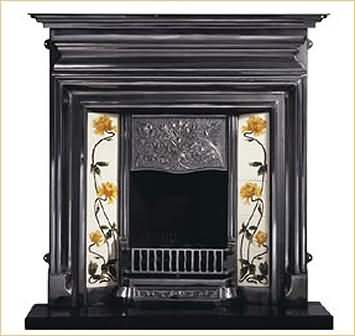
During the Edwardian times, fireplaces were often constructed in the Art Nouveau style. They were simple, classy, and elegant. In England, it was not as popular as it was in other places in Europe. Fireplaces were influenced by many other styles which gained popularity during the Edwardian times.
Other fireplace styles
Those men and women who did not prefer the Art Nouveau style of fireplaces opted for glazed brick fireplaces or even tile fireplaces. Glazed bricks and tiles could easily withstand the heat and were not damaged by it. These materials did not cause any disruptions and light could easily be reflected in their presence.
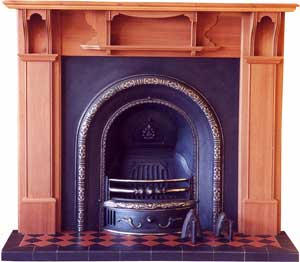
Even wooden fireplaces were popular during Edwardian times. These fireplaces were made out of medium wood or dark wood. In these fireplaces, glazed brick or tile was also included. The wooden fireplaces brought a rustic, warm touch to the households. The wood that was used in these fireplaces was mainly mahogany, walnut, and oak.
In the Art and crafts style of fireplaces brick, wood, and tiles were all used together. Some amount of copper was also inserted in the fireplaces. This style of a fireplace made use of natural material and it lends the entire room a natural feel. Not too many abstract designs were used. Only the borders were decorated, that too, the decorations were kept as simple as possible. Even the copper that was used in these fireplaces was a handcrafted one.
Edwardian Era Baths
Bathroom styles are obviously an important choice while setting up a new house. While today you have several choices in terms of style and innovation when it comes to bathrooms, most people prefer the traditional style of the Edwardian baths. The Edwardian bath style of designing a bathroom has seen an upsurge in popularity in recent times, particularly since the upsurge in the popularity of television sitcoms such as Changing Rooms.
Normally some time ago you may have found things like a traditional faucet or an old slipper bath lying broken in a junkyard. However thanks to the reinvigoration of the Edwardian style, manufacturers have been busy trying to recreate the age-old magical designs with a modern twang.
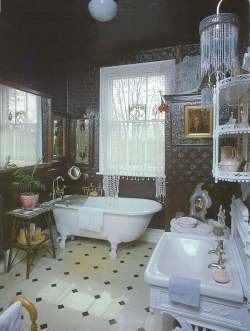
The issue with a traditional Edwardian bath is that it may not always fit in with the type of residence in a modern-day high-rise apartment then you may find it difficult to adopt the Edwardian bath styling for your bathroom for the simple reason that it may feel awkward.
The style is best suited for maybe houses that are not apartments and are interior decorated along the same lines as in the traditional style. Then again it is completely your personal choice if you wish to keep the traditional style in a high-rise apartment, maybe it works for you.
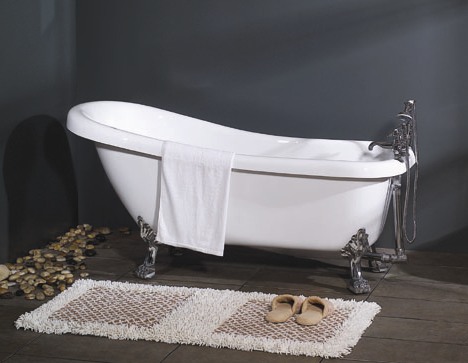
Central to any Edwardian bath is the bathtub itself. While the most obvious choice for a bathtub in such a style is the slipper bath, the standing roll-top bath might go well with the whole set up too. The flooring should be dark and polished giving it a different appeal.
The faucet can be a free-standing one or may even be well mounted depending on your choice as both are in line with the Edwardian traditional style. The sanitary ware in this style will have a bold and masculine appeal partly due to the curved angles and deep ridges incorporated into it.
The bathroom is usually well lit, perhaps with a chandelier to add to the whole appeal factor again. The tones of green, brown, and maroon may go perfectly with the lighting although might be used in softer colors as well. Curtains are preferred to blinds in this style.
Edwardian Era Bookcases
The Bodleian Library at Oxford University houses the oldest known bookcases today. These were perhaps made in the last few years of the sixteenth century. You will find in this library the oldest example of shelved galleries made over flat wall cases.
Bookcases emerged after the printing press made books affordable to the not-so-rich class. Soon after people started purchasing books for themselves they needed something to keep the books safely stored. Initially made of Oak which is still considered one of the best materials for the making of bookshelves these became an immediate hit on hitting the markets. The popularity of bookcases soon became synonymous with the increasing popularity of books.
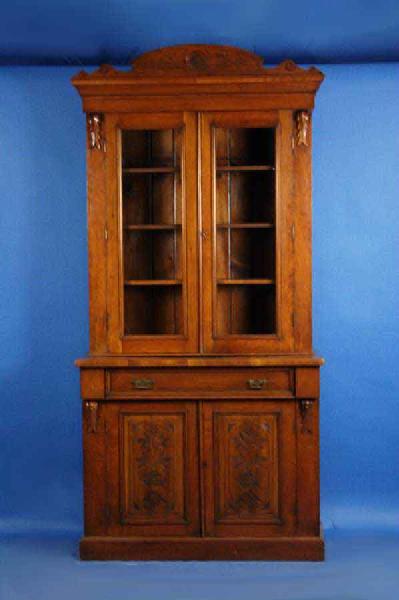
Books were no more royalty in the Edwardian era and bookcases came up in various sizes and designs to suit the customer’s needs. The Edwardian era usually refers to the period between 1900 and 1910 when England was under the rule of King Edward VII. A modern and practical monarch, King Edwards’s reign saw major changes in the lifestyle of not only the rich but also the ones not so fortunate.
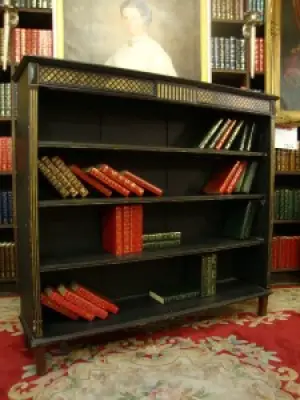
A typical example of an Edwardian bookcase would be a revolving bookcase made of mahogany wood. A noteworthy point here is that almost every other piece of furniture in the Edwardian era was made out of mahogany wood. Coming back to the bookcase the inlay of such a bookcase was usually done in Parquetry or boxwood.
Good colours were another remarkable feature of Edwardian bookcases as the era had bid farewell to the dull colours. Standing on four spectacular molded legs it often had features like a cross-banded cabinet.
The revolving bookcases had the unique characteristic of book display sides all around them. Ceramic casters were often used in the legs of such bookcases. A simpler example of an Edwardian bookcase can be a multi-shelved open bookcase with a single drawer below. The sides of such bookcases were carved with intensity. Drawers, pigeon holes, or letter racks were available on the bookshelves for convenience.
Glazing was used on occasions to add to the visual beauty of the Edwardian bookshelves. Unusual bookshelves contained unique features like adjustable shelves and glazing bars attached to the glazed doors. The makers of these bookshelves laid major emphasis on durability and that is perhaps the reason why many such antique bookshelves are still visible in the market.
Edwardian Era Sofas
Known by various names like couches, settees, davenports, lounges, and chesterfields it is available in numerous verities. Ranging from a two-seater its varieties include three-seater and corner sofas. A loveseat is the miniature version of a lounge and is also as popular as the sofa.
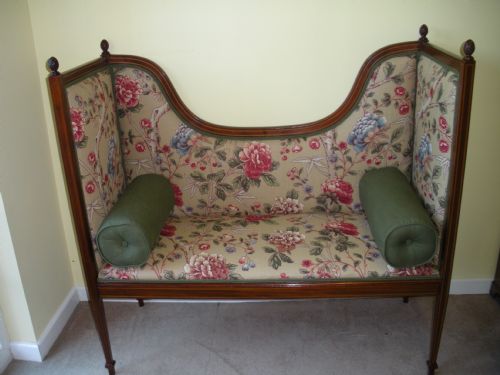
Initially, sofas were just seats on which you could relax and place your head to rest on the back support. Men used to lounge in them while eating or relaxing. With the advent of time, the sofas occupied the roles of day beds, and their comfortable padded seats made it apt for lying down on them. During the industrial era, sofas became a decoration available to every family across the United Kingdom.
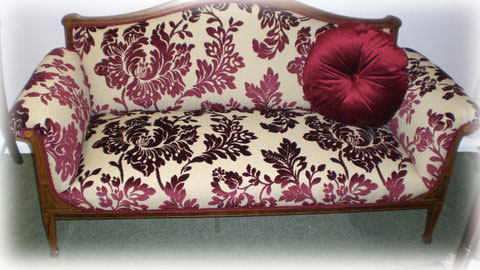
In the Edwardian era, sofas were primarily composed of mahogany wood for durability. Frames were very strong thus as no compromise was done with quality in this era. The backs, seats, and arms were all well padded with high-quality material. Cotton was the preferred cloth for enveloping the sofa and brass fittings were often used in the making of such couches.
Soft grain leather was also used to make some of the more expensive couches. The colours of these sofas varied from bright pastel shades to darker shades when leather was used.
Silver Candlesticks
Silverware was one of the most prized possessions of the Victorian and Edwardian eras. Various goods were molten down from the white metal for decorations. Though the pocket pinch on silver is high it has always been quite moderate as compared to gold which in turn has perhaps made it more popular for decorations.
Silver candlesticks were one of the most favourite silverware before the advent of electricity. The advent of electricity though stole the limelight from the candlesticks; they are still a dream of many. The first silver candlesticks were made out of sheets of silver. It usually accompanied a hollow stem and was quite fragile.
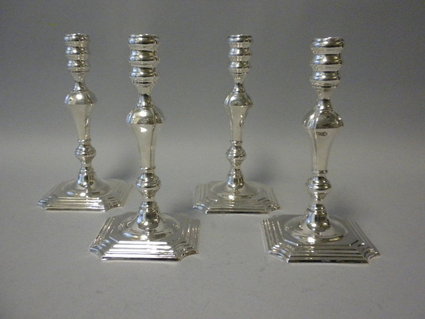
The casting methods were brought in practice after the 1700s by the Huguenot silversmiths. However sheet silver came back in business soon again thanks to the developments in industrial methods by the Sheffield and Birmingham silversmiths. Candlesticks came in very few varieties and designs before the advent of die-stamping. A basic candlestick would be a broad base accompanied by a thin stem sometimes with a nozzle at the top.
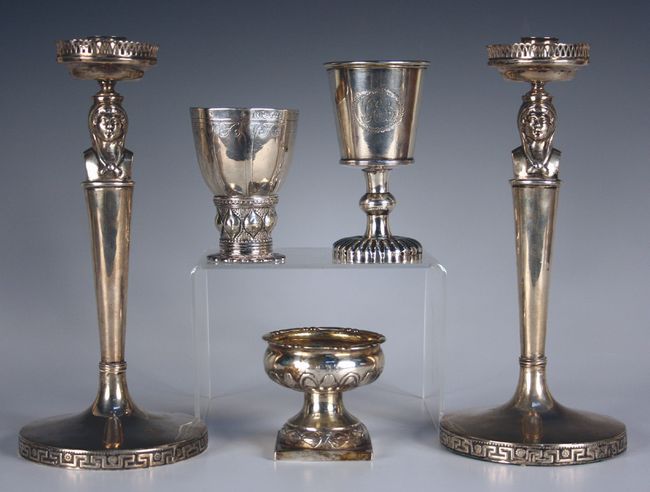
The Edwardian era was known for changes. Be it colours or designs everything went through a wide variety of changes thanks to the new monarch. The fashion of this era spoke of light shades of brighter colours. Complex carvings and designs were shown the way out and more sober and simpler designs became the trend. This led to a fashion we still follow, that of simplicity.
Candlesticks were widely made in the Victorian era. In the 1900s however, with the advent of electricity, the making of candlesticks became restricted only to decorative purposes. A typical example of a silver candlestick made in the Edwardian era would be one of the art and craft styles. This design of candlesticks usually came with round bases featuring capital and drip pans.
Rivet detailing was another unique attribute of this style of candlesticks. Another example of an Edwardian silver candlestick would be one with an octagonal base. Also featured here are sunken fluting and removable sconces. A border of reed adds to the beauty of this candlestick. The simplicity of these designs is noteworthy. There are no complex carvings or intense linings and borders included.
Edwardian vanity
Edwardian vanity had a characteristic decor which was the result of it being a product of the age. It was in the Edwardian era that the birth of modern fashion took place. As a result vanity became a very important piece of furniture to style oneself. In fact, not only women but also men gave importance to style.
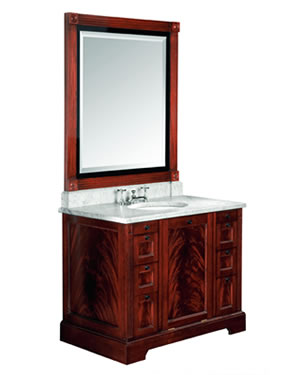
Cherry veneers and Birch solids were commonly used for the vanity of this age. If you are going for the vanity of this age, then you can choose shaped tops, carved pilasters, three or more drawers, and curved doors and drawer fronts. Most of the vanity pieces of this era have two shelves at the back of each door.
A different kind of vanity has one door but three drawers and two adjustable shelves. If you are going for a hand-crafted vanity, then it will cost you more. But it is also worth the price. Prima vera veneers with the natural highlight actually make such vanities unique works of art.
Edwardian Era Tiles Flooring
Various elements have been used for flooring at different times in the past. The Romans started using stone flooring in 27BC realizing the advantage that these stones could be heated for warmth in winters. Based on specific needs we have experimented with numerous materials like ceramic, porcelain, glass, and stone tiles in the past.
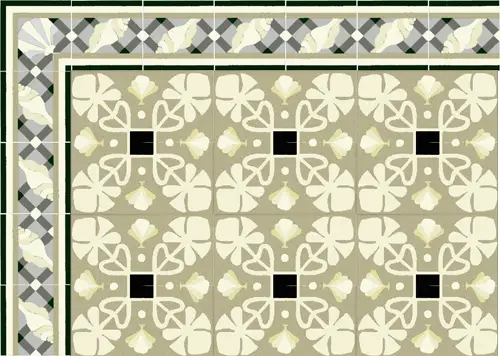
Formal styles were shown a backseat to incorporate the not-so-formal styles. Fresh and creative ideas were given primary focus bringing up a new trend of lifestyle. Interior decoration went through a wide variety of changes in this period including the flooring techniques of then.
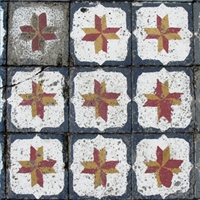
The tile industry we see today is stated to have been born in 1843 when an Englishman Herbert Minton reinitiated making tiles in England. Tiles were a very important discovery as it solved the numerous problems of flooring and its availability in various shades made sure that everyone got his/her pick.
It was also convenient for repairs and replacements. With the advent of the Edwardian era gone were the days of dark shades. Edwardian tiles were primarily in plain colours almost always glazed for hearths. The outdoor steps were often pebble stoned in an Edwardian home.
Floors were essential in footpaths, outdoor rooms, and entrance halls.
Bullnose Edwardian tiles were one of the unique tiles used to decorate the floors in this era. Other Edwardian floor tiles were adaptations of the Italian terrazzo. Floors were made by grouting granite or marble chips in concrete and then being polished to give it a smooth finishing. A natural earthen surface and pastel colours were amongst the favourites of Edwardian floors.
As far as wooden floors are concerned a typical Edwardian floor would be one with highly polished wood block floors. Oak was often used for this purpose. Areas exposed to more wear and tear were made of bricks. These bricks were usually arranged in a herringbone pattern. Red quarry tiles were also quite popular in the Edwardian Era. The bright and floral patterns on the wallpapers required the floors to be of light shades to complement each other.
Wardrobes Cabinets
The Edwardian furniture which included wardrobes and cabinets served a dual purpose. Along with the obvious storage purpose, these also decorated the room where they were placed. Edwardian wardrobes and Edwardian cabinets were mainly made of wood, mahogany being the most frequently used wood.
This particular wardrobe is a handcrafted one that is still loved as antique furniture. It was made around the year 1910. It consists of 3 armoires. The mahogany wood that was used to make this Edwardian wardrobe was so strong that it survives perfectly to date and has a beautiful shine on it, even after so many years. The wispy grain of the furniture makes it too smooth.
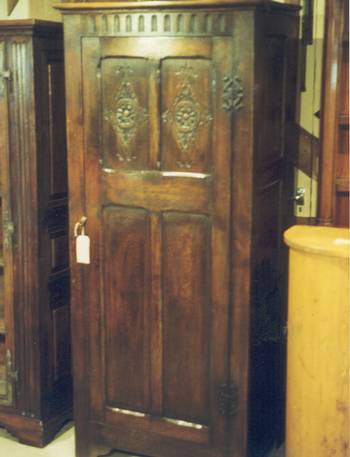
The interior of this wardrobe is made out of satinwood, flame mahogany; ebony wood etc. the front portion of this cabinet looks elegant and classy. The knobs of the furniture are also handmade and carved. They are made of darker hues. They compliment the rest of the body of the wardrobe wonderfully. The inside portion of the wardrobe is divided into many shelves.
There are brass handles for hanging purposes. The garments which are lengthy can be hung from these brass handles. The drawers that are placed inside the wardrobe have been included for additional benefit. It is evident that whoever made this Edwardian wardrobe is a very proficient architect.
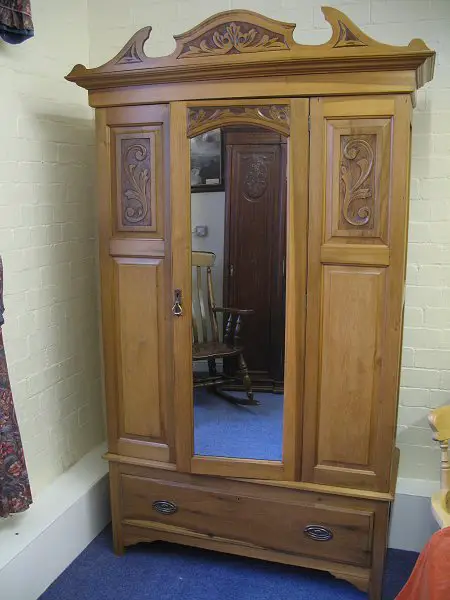
Edwardian Era Wallpapers
Edwardian colors and designs were marvellous new additions to the otherwise stale Victorian designs. The simplicity and attractiveness of Edwardian designs paved the path for modern fashion. Bold in their appeal, Edwardian forms broke the age-old shackles of traditional conservatism.
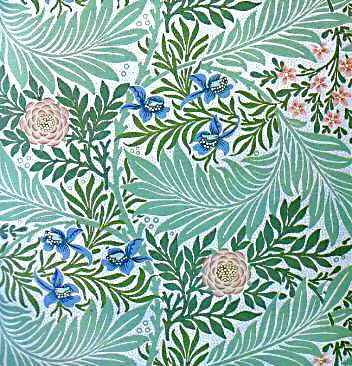
The new taste of the Edwardian era gave rise to new trends in wallpapers. The colours of Edwardian wallpapers were bright shades of light colours. Pastel colours were also preferred at times for interior decoration. Floral patterns were another unique addition to Edwardian Wallpapers. Designs based on bright flowers like rose and lilac started being featured on all walls.
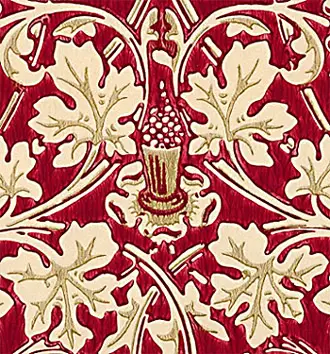
The Art Nouveau movement added further uniqueness to the Edwardian wallpapers. As part of this art movement, all elements of art started being inspired by natural elements. Beautiful flowers, decorative plants, and other natural elements started being featured in all art forms. Depiction of human beings became bolder in art forms.
Modern thoughts and ideologies became popular as part of this art movement. Wallpapers based on the Art Nouveau form became popular across the United Kingdom. Be it floral patterns or bold images of human beings everything found its place in Edwardian wallpapers. The colours strictly followed bright patterns though.
Another unique form of wallpaper in the Edwardian era was the Lincrusta. It refers to embossed wallpapers which had a rubber-like texture. These wallpapers came in a variety of Art Nouveau designs and were unique to the Edwardian era. People looking for textured walls had an option of going for the Lincrusta which was available in abundance all across the UK. Fresh and bright visually these wallpapers were a treat to any eye.
Edwardian Era Glass Mirrors
Edwardian is often associated with the elite, however, the era also brought about a considerable amount of change in the life of the not-so-fortunate. The developments in the path of technology made many things affordable to the nonelites which otherwise was a luxury available only to the rich.
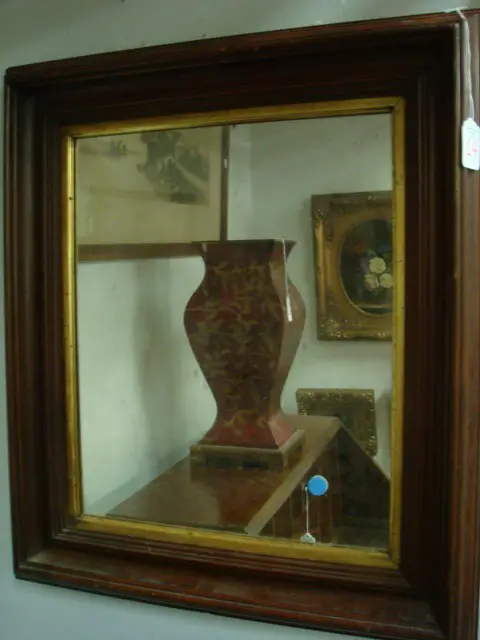
Glass factories started off in the 10th and 11th centuries near quarries of silica. It was a new discovery and one that was going to meet with huge popularity in the near future. Stained glass emerged soon after the discovery of glass. Metallic oxides were added to molten glass to provide them with unique colors.
The various types of popular glasses include cylinder glass or mufti, crown glass, rolled glass, and flashed glass. Various types of methods have been used at different times to make glass. In the Edwardian era sandblasting started being used to make stained glass. Stained glass refers to colored glasses being used for ages in the construction of churches and other equally important buildings.
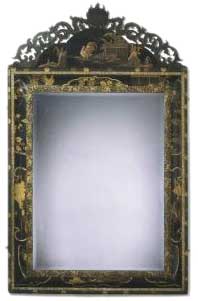
Colorful glasses soon achieved huge popularity and became an addition to every important building in the UK. They were extensively used in windows of churches and other important buildings. Special features of the Edwardian stained glass include brighter shades of light pastels. Complex designs waved goodbye and simple yet catchy designs saw the daylight in this phase.
Bolder figures of human beings and organic natural elements started being painted on these glasses. Finer details like face and hair were painted on the inner glass surface using a special type of glass paint. In the early Edwardian era these finer details became much more elaborate than they used to be in the past.
Plate glass mirrors also started being extensively used for decorating drawing rooms and bedrooms. With the fall in the prices of the mirror, it saw wide acceptance across the United Kingdom. Huge mirrors started decorating the mantelpieces above fireplaces of most houses in the UK. Thus mirrors no more remained the privilege of the rich alone.